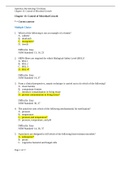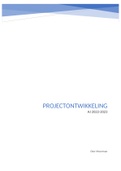Exam (elaborations)
OpenStax Microbiology Test Bank Chapter 13: Control of Microbial Growth Chapter 13: Control of Microbial Growth * = Correct answer | 2022 latest update
- Course
- Institution
OpenStax Microbiology Test Bank Chapter 13: Control of Microbial Growth Chapter 13: Control of Microbial Growth * = Correct answer Multiple Choice 1. Which of the following is not an example of a fomite? A. catheter B. doorknob C. mosquitoes* D. towels Difficulty: Easy ASM Standard: 13, ...
[Show more]




